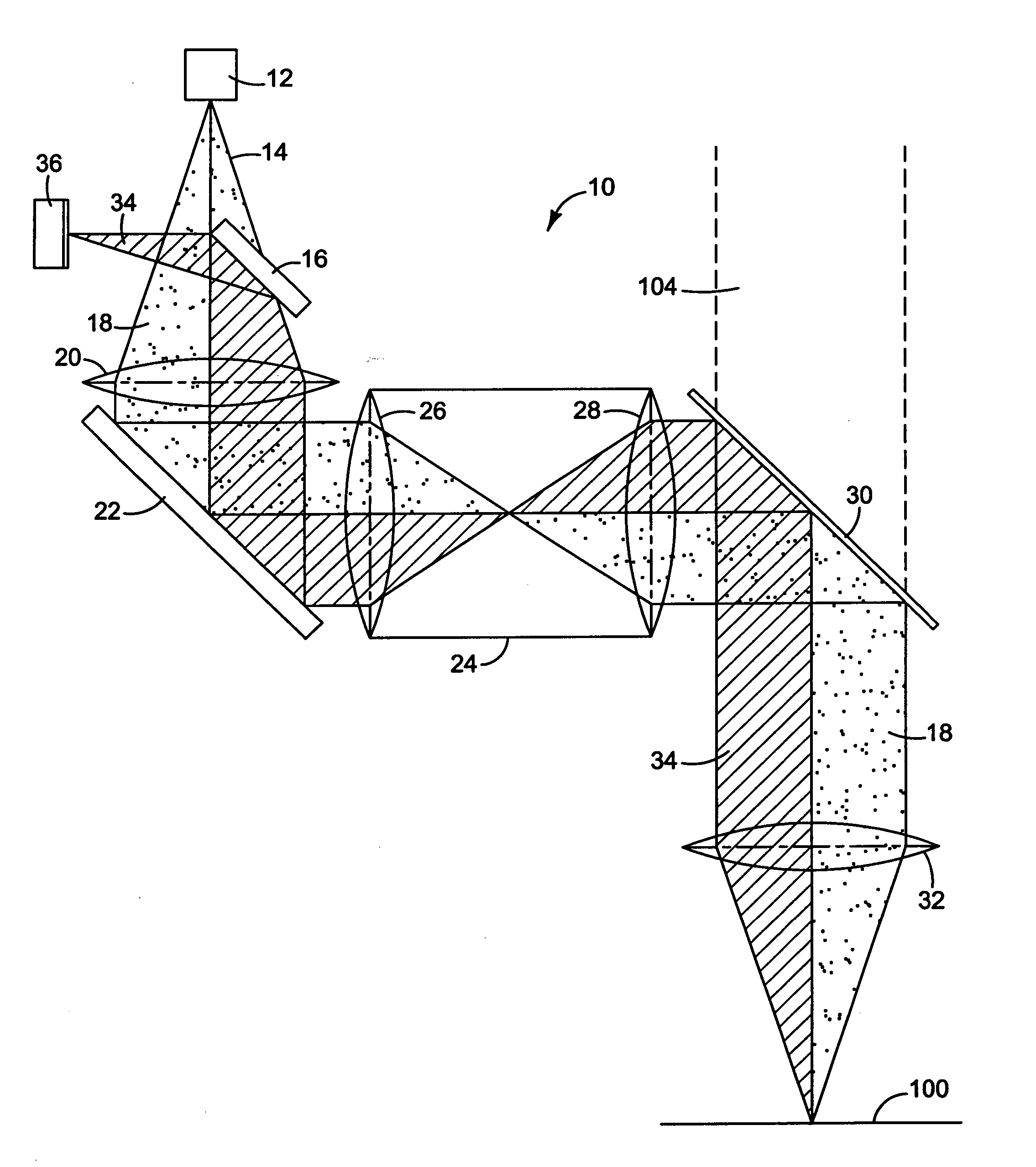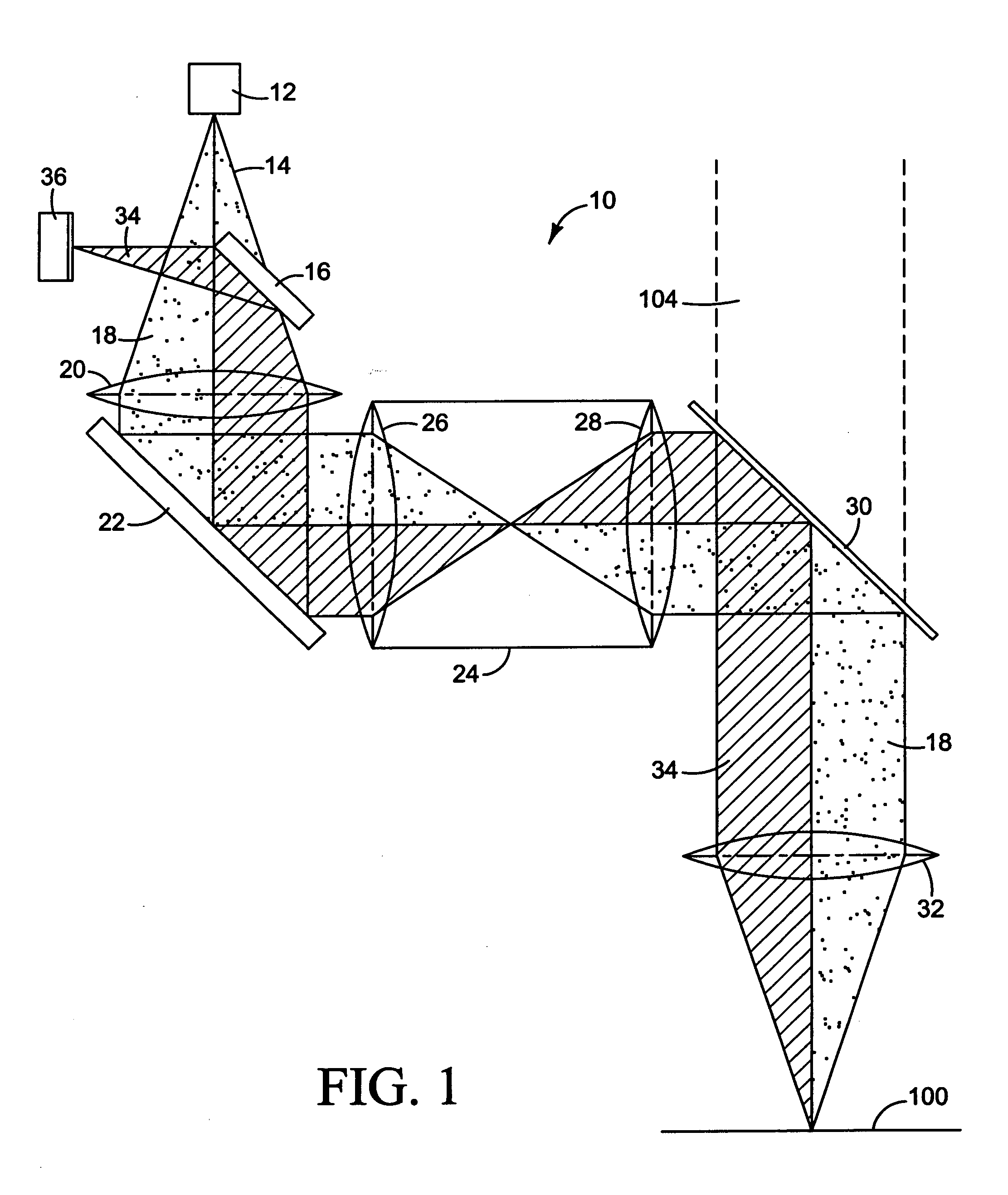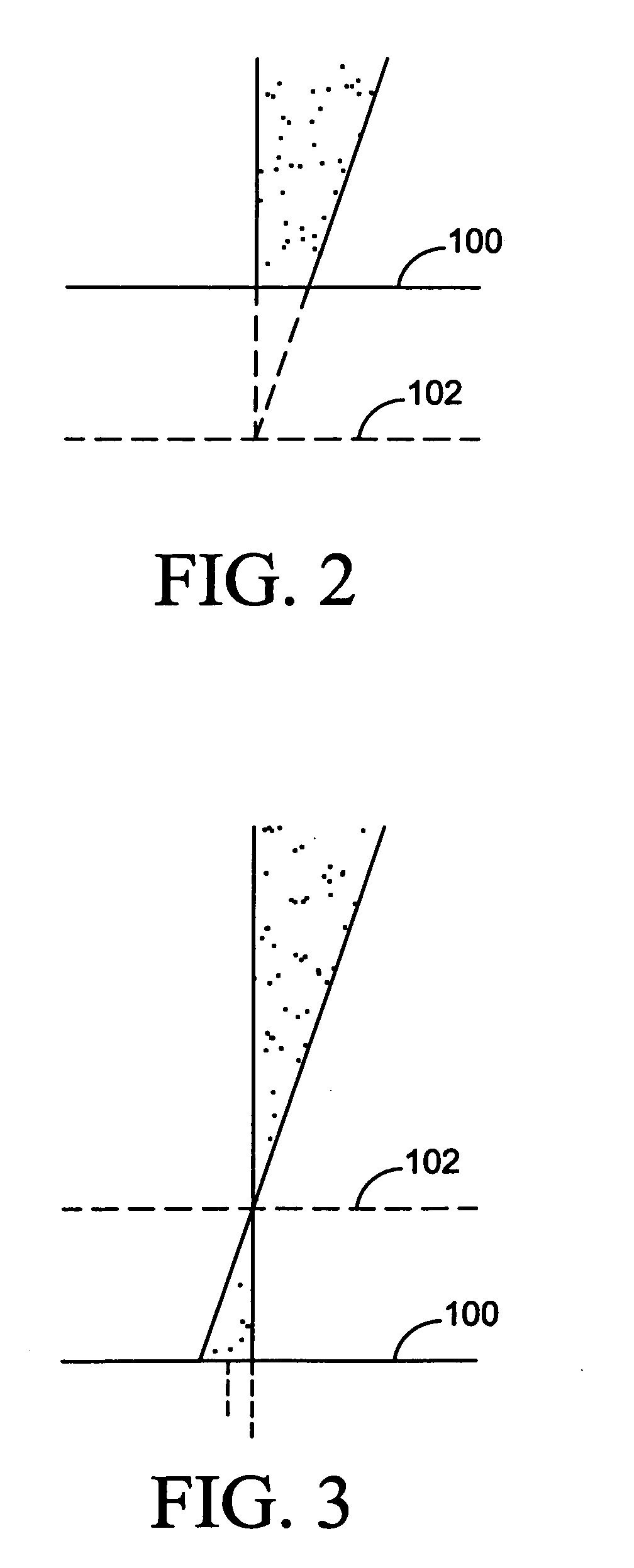Distance measuring system
a distance measurement and distance technology, applied in the direction of instruments, optical elements, reradiation, etc., can solve the problems of inefficient light use of line averaging, reduced light collected by the objective lens, and particularly inefficient technique on specular surfaces
- Summary
- Abstract
- Description
- Claims
- Application Information
AI Technical Summary
Benefits of technology
Problems solved by technology
Method used
Image
Examples
Embodiment Construction
[0021] While the invention is susceptible of various modifications and alternative constructions, certain illustrated embodiments thereof have been shown in the drawings and will be described below in detail. It should be understood, however, that there is no intention to limit the invention to the specific form disclosed; on the contrary, the invention is to cover all modifications, alternative constructions, and equivalents falling within the spirit and scope of the invention as defined in the claims.
[0022] Microscopes are used to examine minute objects by enlarging an image. In a classical compound microscope, the microscope has an objective lens and an eyepiece lens that define an image beam passing through the lenses. The image beam is formed from light reflected from a target surface. The target surface is in focus when located at the in-focus region, a distance away from the objective lens defined by the optical characteristics of the combination of the objective and eyepiec...
PUM
 Login to View More
Login to View More Abstract
Description
Claims
Application Information
 Login to View More
Login to View More - R&D
- Intellectual Property
- Life Sciences
- Materials
- Tech Scout
- Unparalleled Data Quality
- Higher Quality Content
- 60% Fewer Hallucinations
Browse by: Latest US Patents, China's latest patents, Technical Efficacy Thesaurus, Application Domain, Technology Topic, Popular Technical Reports.
© 2025 PatSnap. All rights reserved.Legal|Privacy policy|Modern Slavery Act Transparency Statement|Sitemap|About US| Contact US: help@patsnap.com



